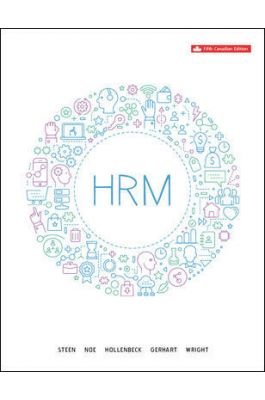Human Sexuality Diversity in Contemporary America 9th Edition by William Yarber – Test Bank
Chapter 15
MULTIPLE CHOICE
- Which of the following sexually transmitted diseases (STIs) must be reported by the health care providers to local or state health departments and to the federal Centers for Disease?
- trichomoniasis
- human papillomavirus (HPV)
- chancroid
- lymphogranuloma venereum (LGV)
Answer: C
Bloom’s Level: Remember
Difficulty: Low
Feedback: The STI Epidemic, 481
Topic: STI Epidemic
APA Learning Outcome: 1.2 Develop a working knowledge of psychology’s content domains
Learning Objective: Explain the STI epidemic, including who is affected, factors contributing to the spread of STIs, and consequences of STIs.
- Which of the following does NOT have to be reported to the state health department?
- gonorrhea
- syphilis
- chlamydia
- genital herpes
Answer: D
Bloom’s Level: Remember
Difficulty: Low
Feedback: The STI Epidemic, 481
Topic: STI Epidemic
APA Learning Outcome: 1.2 Develop a working knowledge of psychology’s content domains
Learning Objective: Explain the STI epidemic, including who is affected, factors contributing to the spread of STIs, and consequences of STIs.
- The number of new cases of a disease is called the
Answer: A
Bloom’s Level: Remember
Difficulty: Low
Feedback: The STI Epidemic, 480
Topic: STI Epidemic
APA Learning Outcome: 1.1 Describe key concepts, principles, and overarching themes in psychology
Learning Objective: Explain the STI epidemic, including who is affected, factors contributing to the spread of STIs, and consequences of STIs.
- Which of the following is NOT a reason why young people are at greater risk for sexually transmitted infections (STIs)?
- They are more likely to have multiple sexual partners.
- They are more likely to engage in risky behavior.
- They are more likely to select partners who are at higher risk for acquiring an STI.
- They are more likely to have lower immunity than more mature adults.
Answer: D
Bloom’s Level: Understand
Difficulty: Medium
Feedback: The STI Epidemic, 483
Topic: STI Epidemic
APA Learning Outcome: 1.2 Develop a working knowledge of psychology’s content domains
Learning Objective: Explain the STI epidemic, including who is affected, factors contributing to the spread of STIs, and consequences of STIs.
- What does the author of the text mean by the “biological sexism” of sexually transmitted infections (STIs)?
- Men are more likely to transmit STIs than are women.
- Men can more easily tell if their sexual partners are infected with STIs.
- Women are more vulnerable to infection and long-term effects of STIs than men.
- There are fewer barrier techniques available to women to protect them from STIs.
Answer: C
Bloom’s Level: Understand
Difficulty: Medium
Feedback: The STI Epidemic, 482
Topic: STI Epidemic
APA Learning Outcome: 1.1 Describe key concepts, principles, and overarching themes in psychology
Learning Objective: Explain the STI epidemic, including who is affected, factors contributing to the spread of STIs, and consequences of STIs.
- Which of the following is NOT a behavioral factor that contributes to the spread of sexually transmitted infections (STIs)?
- initiating intimate sexual activity at an early age
- having multiple sex partners
- using more forms of birth control and contraception
- having high-risk sexual partners
Answer: C
Bloom’s Level: Understand
Difficulty: Medium
Feedback: The STI Epidemic, 483–488
Topic: Behavioral Factors
APA Learning Outcome: 1.2 Develop a working knowledge of psychology’s content domains
Learning Objective: Explain the STI epidemic, including who is affected, factors contributing to the spread of STIs, and consequences of STIs.
- What is the relationship between substance abuse and the spread of sexually transmitted infections (STIs)?
- Intoxicated individuals are much more likely to contract STIs because of higher risk of kidney failures.
- The act of sharing drinking glasses or pipes can spread STIs.
- Abuse of alcohol and drugs is associated with high-risk sexual behaviors.
- Individuals who abuse substances are unaware of the symptoms of STIs as frequent intoxication masks the early symptoms of STIs.
Answer: C
Bloom’s Level: Understand
Difficulty: Medium
Feedback: The STI Epidemic, 486
Topic: Behavioral Factors
APA Learning Outcome: 1.2 Develop a working knowledge of psychology’s content domains
Learning Objective: Explain the STI epidemic, including who is affected, factors contributing to the spread of STIs, and consequences of STIs.
- Which of the following is false about the ability of male condoms to protect against sexually transmitted infections (STIs)?
- Condoms lubricated with spermicide are no more effective than other lubricated condoms in protecting against the transmission of sexually transmitted diseases (STDs).
- Latex condoms can reduce the risk of transmission of gonorrhea if used consistently and correctly.
- The use of male condoms may reduce the risk of cervical cancer.
- Consistent and correct use of male latex condoms is 100 percent effective in protecting against HIV infection, but less so for chlamydia or gonorrhea.
Answer: D
Bloom’s Level: Understand
Difficulty: Medium
Feedback: The STI Epidemic, 487
Topic: STI Epidemic
APA Learning Outcome: 1.2 Develop a working knowledge of psychology’s content domains
Learning Objective: Explain the STI epidemic, including who is affected, factors contributing to the spread of STIs, and consequences of STIs.
- Which of the following is true of female condoms?
- When worn in the vagina, female condoms are less effective than male condoms at preventing sexually transmitted diseases (STIs).
- Research has shown that nitrile female condoms are unsafe when used with any lubricant.
- Research has shown that human immunodeficiency virus (HIV) cannot travel through the nitrile barrier present in female condoms.
- When worn in the vagina, female condoms are more effective than male condoms at preventing STIs.
Answer: C
Bloom’s Level: Understand
Difficulty: Medium
Feedback: The STI Epidemic, 487
Topic: STI Epidemic
APA Learning Outcome: 1.2 Develop a working knowledge of psychology’s content domains
Learning Objective: Explain the STI epidemic, including who is affected, factors contributing to the spread of STIs, and consequences of STIs.
- Which of the following is NOT a social factor that contributes to the spread of sexually transmitted diseases (STIs)?
- poverty and marginalization
- erroneous perception of partner’s STI status
- limited access to health care in low-income areas
- moral conflict and secrecy about sexuality
Answer: B
Bloom’s Level: Remember
Difficulty: Low
Feedback: The STI Epidemic, 488–489
Topic: Social Factors
APA Learning Outcome: 1.2 Develop a working knowledge of psychology’s content domains
Learning Objective: Explain the STI epidemic, including who is affected, factors contributing to the spread of STIs, and consequences of STIs.
- The organism that causes chlamydia is
- Chlamydia trachomatis.
- Treponema pallidum.
- Chlamydia difficile.
- Chlamydia tetani.
Answer: A
Bloom’s Level: Remember
Difficulty: Low
Feedback: Principal Bacterial STIs, 491
Topic: Chlamydia
APA Learning Outcome: 2.2 Demonstrate psychology information literacy
Learning Objective: Recognize the principal bacterial STIs.
- The most common and most commonly reported bacterial sexually transmitted infection (STI) in the United States is
- acquired immunodeficiency syndrome (AIDS).
Answer: D
Bloom’s Level: Remember
Difficulty: Low
Feedback: Principal Bacterial STIs, 491
Topic: Chlamydia
APA Learning Outcome: 1.2 Develop a working knowledge of psychology’s content domains
Learning Objective: Recognize the principal bacterial STIs.
- Which of the following is NOT a consequence of untreated chlamydia?
- epididymitis
- infertility
- acute arthritis
- candidiasis
Answer: D
Bloom’s Level: Remember
Difficulty: Low
Feedback: Principal Bacterial STIs, 494
Topic: Chlamydia
APA Learning Outcome: 2.2 Demonstrate psychology information literacy
Learning Objective: Recognize the principal bacterial STIs.
- Symptoms of chlamydia usually occur within
- 6 months after exposure.
- 1–3 weeks after exposure.
- 3 months after exposure.
- 6–8 weeks after exposure.
Answer: B
Bloom’s Level: Remember
Difficulty: Low
Feedback: Principal Bacterial STIs, 494
Topic: Chlamydia
APA Learning Outcome: 2.2 Demonstrate psychology information literacy
Learning Objective: Recognize the principal bacterial STIs.
- Due to the fact that chlamydia is often asymptomatic, health care professionals recommend that sexually active persons be checked for it every
- three to four weeks.
- three to six months.
- other year.
Answer: C
Bloom’s Level: Remember










Reviews
There are no reviews yet.